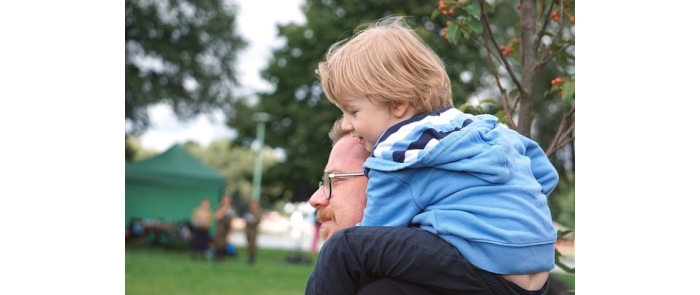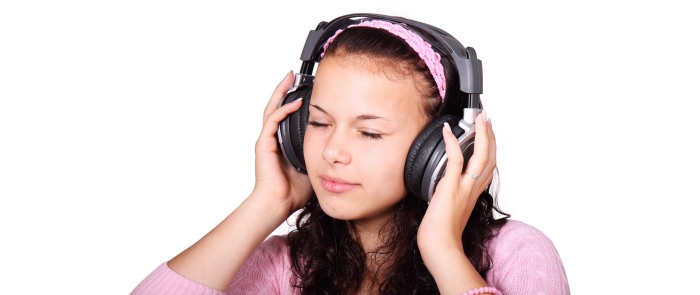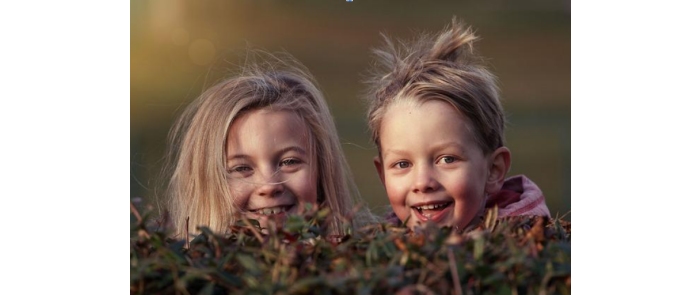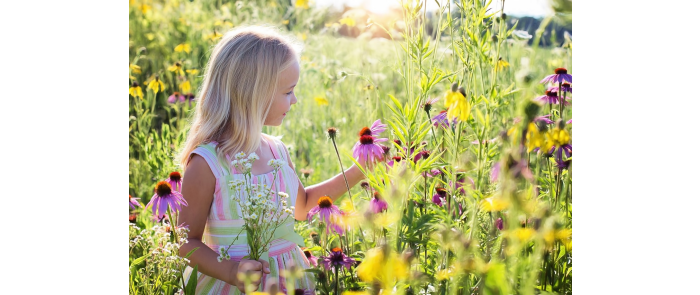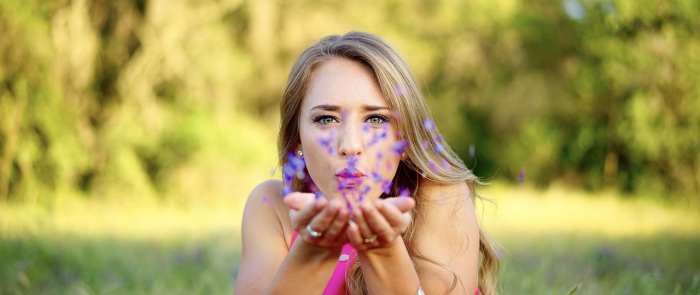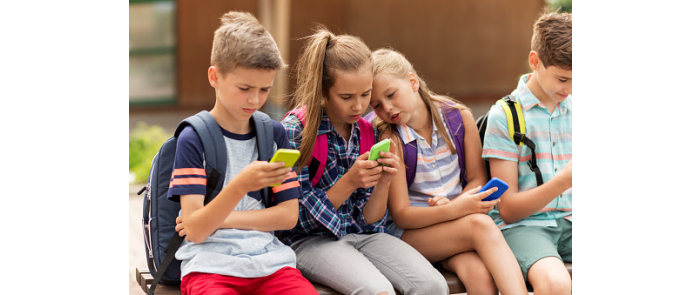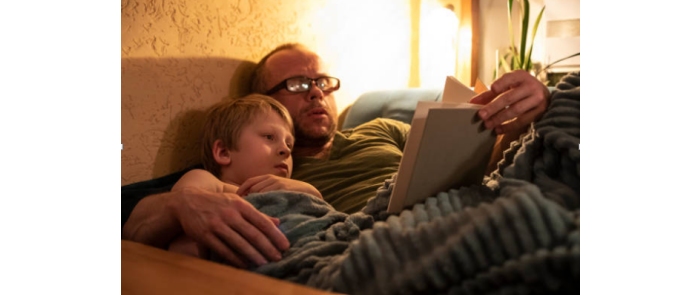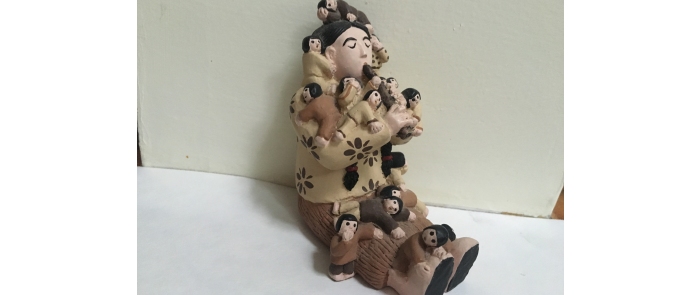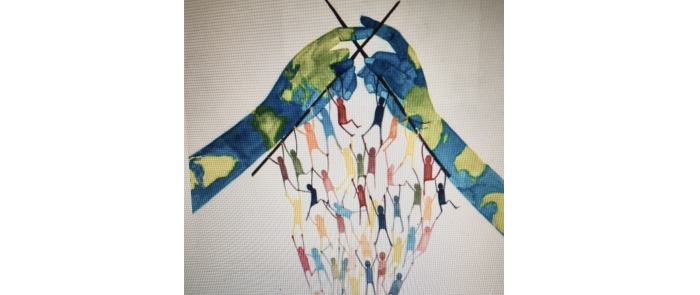After enduring more than two years of lockdowns, isolation, sickness, grief, loss and uncertainty, our children are not alright! According to recent reports from the Center for Disease Control and Prevention, there has been increased instances of bullying and social media usage which are also impacting our kids!
Stress levels for our kids along with their parents and teachers are at an all time high. The Surgeon General Vivek Murthy said, “the future well-being of our country depends on how we support and invest in the next generation.”
Here are ways you can help your young child cope with feelings of sadness and anxiety. Start at an early age to foster inner resources.
1. Connect physically with your child and keep them close. Physical contact is essential for building security and safety. And a great way to bond with your child and uplift your spirit is to give piggy-back rides. For the child, the feeling of being carried immediately changes your child’s heartbeat from stressed fast pulse rate to a slower more relaxed one, this frees your child momentarily from the undercurrent of emotional distress. For the person giving the ride, having the closeness allows the next tip to happen easily- talking together in fun.
2. Talk and have fun with your child at times when things are undisturbed so they know you are there when they need you. Being present and close during the ride on your back opens the conversation for intimacy and sense of peacefulness which is very much needed to reassure you and your child.
3. Listen to your child without judgement and be patient as they express their feelings. Help them learn the words to identify their emotions. Say things like, “sounds like you were afraid of getting lost” or “maybe your friend just had made other plans but he still wants to be friends with you, or tell me more.”
4. Offer coping skills you can learn together such as, relaxation and visualization. Visit www.drroxannedaleo.com for FREE guided imagery relaxation audio.
Archive for the ‘Blog’ Category
The throat is the communication center of your body. Your throat can be used in verbal and non-verbal ways: verbally as in speech, non-verbally as in humming.
Humming enhances your brain power and calms the nerves. Humming deeply, will create more resonance. And creating more resonance generates the intention behind it. For example, humming softly, melodically in the ear of your child helps calm her. Whereas, humming in staccato (the musical signature of short, quick beats) or deliberate popping sounds can uplift your child’s mood from distressed to delighted.
Both kinds of humming is a kind of sonic meditation in which you vibrate! Literally, you vibrate your skull and brain with your lips closed. Doing this for about three minutes will put you into an altered state of consciousness and will transmit this trace-like state to your child which is very calming for both of you. Webster’s dictionary defines hum as “to run smoothly”. I love that!
This process has been well researched in the field of sound healing and it is called entrainment. Entrainment is being in rhythm with our child, activity, surroundings and with the Universe. Grandmothers singing lullabies and indigenous peoples using chanting and drumming knew the power of sound healing. We can bring back these ancient practices for modern times as we incorporate techniques for raising the resilient child.
Besides having the calming effect, it is interesting to note, that the humming vibration actually wakes up your brain cells and makes you receptive to ideas and subconscious information. So if you want to tune up your brain, hum to yourself.
When you are attuned to your surroundings, you are able to pay attention to the vibrational nature of all life.
Teach your child to connect with you for the purpose of calming down together.
We know from neuroscience when you exhale, as in blowing out a candle, the area of the brain called the medulla oblongata triggers the “Relaxation Response” a process developed by Harvard cardiologist, Herbert Benson, MD. who wrote the New York Times best selling book by the same name. A must read if you want to be convinced of the beneficial effects for adults and children.
Also use the deep breathing practice with outdoor fun by blowing out dandelion puffs and bubbles.This simple out breath, activates the brain and heart to bring about the relaxation response—isn’t that amazing?
1.Catch your child in the act of being caring and sharing and you will get more of that behavior. Slow down the action by deliberately bringing attention of the one who gave, to the expression of joy on the face of the other. This is an emotionally intelligent way of building your child’s self-worth. Self-concept grows out of the positive and negative experiences in your child’s life; so be on the look out for the positive ones and amplify the influence these experiences have by making sure your child “sees and feels” good about himself in the process.
2 The second key to building self-worth is found when we model how to take our attention off our own problems and worries and focus, instead, on what we can do for someone else. The simple shift in thinking about “the other” – our brother, our sister, allows the child to lose track of circumstance and create an act of kindness and caring for its own sake. An act of caring done without any expectation of getting something in return actually makes your child feel worth..
3.Prompt your child by having a short conversation about ideas that would help the other member of the family or would offer an expression of joy and love for them. When you take the time to do this, you help your child truly know their own identity and significance.
4.Tell your child about the day or night they were born. Children love to hear about the excitement of their birth. Use storybooks like: “Knots On A Counting Rope” by Bill Martin, Jr. and “On the Night You Were Born” by Nancy Tillman.
5. Tell you child how you named him and why. This kind of personal information gives your child awareness of his identity and significance. Read this bedtime story: “The Incredible You” written by Wayne Dyer.
My life’s work is to help as many families as possible to get in touch with natural healing
from within. I want you to know and trust that your body has the ability
to know when it is injured or damaged. This is good news. It means you are not
to be anxious or afraid should you get sick or hurt because your body can regenerate
cells and tissues to reestablish equilibrium.
It’s a matter of how we “attend.” Attention is how our world comes into being. So paying
attention to the warning signs from our body, mind and spirit is key to survival and inner
balance. And when we set up the proper conditions, such as deep rest, nourishing
foods, fresh air and sunshine, our body regains strength to adapt, grow and heal.
I’d like to share with you optimal ways of tuning into your body/mind/spirit and know the
ways of wisdom on all three levels. My reputation helping people do this started with my
work supporting terminally ill children and now I help folks like you who are having
challenges with anxieties of all kinds.
For over twenty years of deep study and experience, I’ve been developing ways to help
young people feel better, more confident, focused and happy. This process of helping
others led me to help myself increase my knowledge about a wide variety of healing
methods from cultures around the world.
Who you are matters. How you feel about yourself matters. And my life work has shown
that those of you who really put an effort into understanding yourself more
deeply, can bring about profound improvements in your health and mental health.
As we evolve our consciousness and shift into a new world, the knowledge of self,
nature of mind and power of inner energies are the keys to humans flourishing.
Now, let’s go outside and plant those seeds of change in our own backyard or
on the window sill!
“It is spring again. The earth is like a child that knows poems by heart.” -Rainer Maria Rilke-
Here in New England, when Springtime comes after the long, cold winter, it’s
magnificence and magic cannot be denied. Perhaps, it is because the change of
seasons are truly dramatic in this part of our country but I like to think that it is Mother
Nature awakening our senses to her cyclical beauty so that we may remember her
ever-giving life in all forms and our deep connection to all that is.
Let’s celebrate Earth Day with these four simple daily rituals which honor the earth and
reinvigorate our health and the health of the planet:
1. Walk barefoot everyday. Known as, earthing, this practice connects us to the
Earth’s electrical energy providing a boost to our energy and a reduction in inflammation
in our bodies. “Earthing is a scientific phenomenon for healing our bodies by doing one
of the simplest things a human can do… standing barefoot on the Earth.”
2. Walk and breathe through the quiet forest. Known, as Shinrin-Yoku, this practice of
forest bathing, which originated in Japan, results in lowering your stress hormones and
improving your respiratory and immune systems. Immerse all your senses in the forest-
not only what you see but pay attention to the smells, sounds, tastes and touch. Did you
know that pine needle tea is good medicine? Try it!
3. Hug a tree or lean up against it. You can close your eyes and imagine as the tree is
taking up nutrients from its roots all the way to the very top branches and leaves.You
are getting this tremendous energy current through your body for rejuvenation by
connecting to the tree in this way.
4. Think eco-mindfully everyday. Choose a few ways of taking action to reduce your
carbon footprint. Recycle plastics and bottles, pick up trash on your path, compost
kitchen food waste. Every small effort makes a big difference.
March in New England can be quite windy and even chilly as the earth thaws and buds
remember their way of rebirth for us all to see again and again each year as if it was
a unique, spectacular occurrence. And yet it is normal and natural. The wind is Mother
Nature breathing and stirring up the energies of the atmosphere.
So it is with our own breath. Show your child how you can slow down by being present
and breathe to tap into our inner energies. Use your own moment-by-moment
awareness to offer your spontaneous availability.
Try this simple, joyful practice. Place some flower petals in the palms of your hands;
then, take a deep breath, make a wish and blow the petals into the wind. See how far
they will go.
Through this method, you are teaching yourself, first and foremost, how to be BOTH
spontaneous and available. You do this by recognizing the fact that you can generate
emotions of pleasure and peacefulness by choice.
Teach your child to connect with you for the purpose of calming down together.
We know from neuroscience when you exhale, as in blowing out a candle, the area of
the brain called the medulla oblongata triggers the “Relaxation Response” a process
developed by Harvard cardiologist, Herbert Benson, MD. who wrote the New York
Times best selling book by the same name. A must read if you want to be convinced of
the beneficial effects for adults and children. The positive results will be fast and
effective.
For more information or a free guided imagery click below:
Resting is Caring – Guided Meditation
By Dr. Roxanne Daleo
The number one factor that contributes to your child’s healthy self-esteem and industry
is the development of a growth mindset. That means, the more you can give your child
ways to practice flexible thinking and adaptability, the faster your child will build skills in
social-emotional intelligence which leads to a sense of competence.
It all starts in the home environment, you be the energy that generates a supportive,
positive, enthusiasm for learning and life. You introduce your child to the ways they can
become competent, flexible, industrious and adventuresome. Talk about the ability to
see things from a new perspective and different viewpoints; It can be as simple as
playing a game and seeing several steps ahead of time.
PREPARED AND FLEXIBLE EMPOWERS
A growth mindset is both preparedness to the expected and openness to the
unexpected. Show your child how to problem-solve using two different moves, like in a
game. Demonstrate how to see different vantage points. Here’s how. Imagine a tree
with two large branches growing outward from its trunk. You might want to point to a
tree outdoors or make a drawing while sitting at the kitchen table. Now, let’s say, the
branch to the left we’ll call “A” and the branch to the right we’ll call “B.” You have the
ability to choose. For example, say you are planning to ask a friend to join you to do
something, if he says “yes” that’s “A” and you know what you’ll do. But if he says “no”
that’s “B” then you have plan out what to do instead and still feel OK and in charge of
your energy and emotions so that you can keep your inner balance. When you have a
growth mindset, you are prepared, ahead of time, with both “A” and “B” decision. This
way you feel more control. You don’t have to let the outside world upset you. You have
enough awareness to know both are OK.
ADJUSTABILITY AND IMPROVISATION BUILDS CONFIDENCE
We also have to be able to move forward without knowing everything ahead of time.
When we have a growth mindset to “think on the spot” “think out of the box” we become
better able to adjust or improvise. To improvise means “to make do from whatever is
available.” A fun way to demonstrate improvisation is by exploring. You can comb a
beach for drift wood and other objects and create a sculpture. Or you could make
something new at home with left over craft materials, fabrics or electronics. Bringing
new energy and the creative forces to what is available builds confidence to find ways
out of a sticky situation or to just discover interests.
INNER DIALOGUE PREDICTS
When you can talk to you child about the effort he is putting into a task and you promote
the growth mindset with your encouraging words, then your child will use those words to
speak to himself. This is powerful because inner dialogue predicts esteem and resolve
to never give up on yourself. You can say things like “if at first you
don’t succeed, try, try again!” or “You are becoming a person who isn’t afraid of giving
your best, your effort is recognized.” Now ask you child to affirm this by saying to
themself: “I am becoming a person who does my best every time!”
BEING CALM TOGETHER FOSTERS EMOTIONAL STABILITY
Every day make time to be calm and stay quiet together with your child. When you
unplug from the noise of devices and pressure of the outside world, your child
learns to appreciate your presence and his own stillness as the best way to tap inner
resources for peace. Share deep desires of the heart. Ask: “What makes you excited?
or What do you know comes easily for you to do? These are your innate talents.
Everyone has them, it’s up to you to recognize them and grow them with a grow
mindset. That means practicing and building these skills.”
The most valuable gift you can give is your acknowledgement that you see you child
“becoming” the best version of themselves, practicing new skills and developing a
growth mindset. We can’t know everything all at once, but your child can become
content to know they are already good enough.
If you like this article and want more about developing flexibility read “Anything Can
Happen Thursday” on Dr. Roxie’s blog and FREE guided relaxation audio
https://drroxannedaleo.com/roxie/resting-is-caring-guided-meditation/
By Dr. Roxanne Daleo
“ …and that’s true love!” said my grandpa…
his voice made my mind conjure up the entire scene: I see it as if it were real, mom serving
dessert after a big Italian-American feast for Thanksgiving Day, always prepared with love by
my parents in what I believed to be our beautiful New Jersey home. But the fact is, it was only my grandfather’s voice coming from an audio cassette player. A tape I nearly tossed in the trash moments before to clear the clutter from my garage. So glad I have this priceless treasure today.
Through “imaging” you mentally “see.” Your brain takes the audio input of a voice and provides
you a “mental picture”. In this case, it pulled out a memory of the past and my brain served up a scene so vivid you relive it as if it were happening in the present. My grandfather’s philosophy
about true love were his words of wisdom I will treasure forever.
Your brain can also take an idea or visualization to create a future-self. Your brain can be directed using mental imagery which is really a kind of storytelling.
When you add the auditory aspect, such as a voice, you add a person’s energy because your voice is the blueprint of your soul. Listening to the sound of your own voice is a powerful way
to imprint and direct your subconscious mind to connect sound and image.
Add the background music and the brain automatically enhances the imagery experience as if it were real. The mind makes no distinction between real and imagined information; this is why using guided imagery narrations for relaxation are a powerful form of mind/body medicine.
Scientists are learning how we manipulate and examine pictures of the mind and develop
internal states of awareness, resilience and balance.
Many world cultures have been using the power of mental imagery in the form of storytelling.
Let’s look at the Native American culture specifically, they have been using the art of telling stories passed down from one generation to the next as their primary form of wisdom communication. Traditionally, Native Americans transmit by story their mythology, spiritual and historical understandings of themselves and the world in which they live to their children.
Storytelling creates the mental imagery in the minds and hearts of the young, that which elders did not want forgotten. In this way, the elders ensured young would not lose sight of their roots,
important knowledge that would allow them to live in harmony and cooperation with the natural world.
So this Thanksgiving why not try to capture more voices of the elders in your tribe, the seniors in your family. Allow them to pass on their words of wisdom to the children as part of the formal celebration for which we are giving thanks and deep appreciation. In this way, you can be sure
your children and their children have your family’s important knowledge through the beautiful storytelling tradition.
7 Keys to Cultivate Storytelling Family Tradition
1.Give your children and their children a beautiful way to honor their elders by asking
questions about their roots, heritage, country of origin and the ways of their people.
2.Use a recording device to capture and remember forever, the voices of the senior family
members and their words of wisdom.
3.Make the bedtime ritual include recounting meaningful memories you made this Thanksgiving
holiday..
4.Create a work of art. Draw, paint, sing a song or dance your newly realized wisdom tradition.
5. Each year collect keepsake photos, images and quotes in a box or a book.
6.Ask your child to express the kind of person they want to become; share the vision of a world they want to see and live in.
7.Have your child record their own voice to express their visions. Speak about appreciation, love and peace. Play this recording before sleep so the subconscious mind can bring good thoughts to every cell in your child’s body.
8.Mark your life with joy, gratitude and love in tangible ways this holiday season.
Come on over to www.drroxanndedaleo.com for SPECIAL HOLIDAY OFFER
Children have creative minds but it is up to us the adults to inspire
new ways of thinking. Stories we tell and live by are totally tied to our individual and collective consciousness–tell your child the unitive narrative,
our identity is wrapped up in everything we do from the part to the whole.
Pass it on!
Comment & Tell me more at: www.drroxannedaleo.com
Anja Rozen, 13 yr. old student from Slovenia, winner of the Peace Art Poster explains her artwork and intention:
People are holding onto each other. If one lets go the rest of them would fall.

